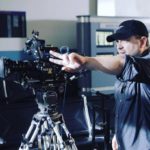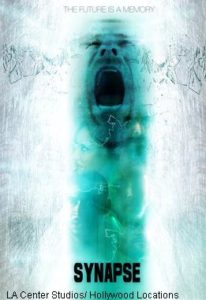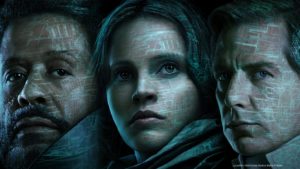What do sketches of Daisy Ridley, Adidas ads, and music videos have to do with science fiction and the newly premiered Rogue One? They all happen to be passions and experiences under the belt of director Kenlon Clark, a science fiction aficionado who can appreciate the unique challenges and advantages that go with a switch from low budget indie films to big budget blockbusters.

Kenlon Clark
It’s a subject many directors, including Clark, have on their minds in light of Rogue One director Gareth Edwards’ impressive trajectory from Monsters (with a mere $500K budget) to the latest Star Wars franchise flick, whose budget was reportedly $200 million. Clark’s own feature film Synapse, which he directed and edited, was filmed on a budget of around $650K and garnered positive reviews.
That $650K budget is “miniscule,” says Clark, because the special effects that make science fiction shine are time-consuming to create and costly too. “It’s super difficult,” he says of the effort of making indie sci fi on the cheap. But he took on the challenge with relish while directing Synapse.
 “The good thing with our film is that it was realistic sci-fi,” Clark explains. Grounded science fiction, which draws on existing technology and is set in the near future, is a good choice for indie filmmakers, he adds. Synapse, a cop and criminal sci-fi thriller, is set 10-20 years in the future; its story grows from the idea that a person’s memories can be transferred and shared, much like photos and status updates are shared today on social media. “We did want to keep it like The French Connection or Narc, but with science fiction augmented into the world.”
“The good thing with our film is that it was realistic sci-fi,” Clark explains. Grounded science fiction, which draws on existing technology and is set in the near future, is a good choice for indie filmmakers, he adds. Synapse, a cop and criminal sci-fi thriller, is set 10-20 years in the future; its story grows from the idea that a person’s memories can be transferred and shared, much like photos and status updates are shared today on social media. “We did want to keep it like The French Connection or Narc, but with science fiction augmented into the world.”
The near-future story setting allowed Clark and team to draw largely on what already exists today in terms of sets, costumes, and tech. But there was still plenty of work on the post-production side to make the film look good. “You have to composite in the (future) tech,” Clark says.
That’s one of his tips to indie filmmakers, by the way — bone up on your compositing skills, because that’s going to help you identify and avoid potential problems down the road in post-production. Clark also emphasizes learning how to direct for visual effects so you can problem solve during filming. “Don’t think, oh, I can fix that later,” he says. That misguided idea gets a lot of directors in trouble, something he says he learned the hard way.

Synapse
On the plus side, indie filmmakers can do an incredible amount of editing and more with a few handy programs and a good block of time. “I did it myself on a laptop using Adobe Premiere,” Clark says. “The thing I love about a laptop is the mobility.”
That flexibility allows Clark to travel with his wife while she’s attending conferences, without missing a beat on his own work. He has even completely edited a music video for EDM group Above & Beyond while sitting in the passenger seat while his wife drove them between Orlando and Key West. Not bad.
With Rogue One premiering today, a lot of indie directors are being reminded of their own dreams to make it big, however they define it. For Clark, that’s a chance at a superhero movie. “I’m working my way to a Marvel film, let’s just say that,” he laughs.

Rogue One characters
Clark thinks the switch from small budget to big budget involves some adjustment, but ultimately the key is the director’s attitude. “There’s a trade-off between money or creative freedom,” he notes. “You’re going to get one or the other. With the money, you’re going to be able to reach a global audience. Your vision will really look great.”
But indie film-making has advantages too, and not just the “cool factor,” he says. “You have to embrace your limitations and work around them,” Clark explains. “Those limitations force you to think outside the box.” And that’s true no matter what size budget you’re working with. “There’s a great quote from Christopher Nolan, who went from Memento ($9 million) to The Dark Knight Rises ($250 million). He said it’s just like swimming. It doesn’t matter how deep the water is, you’re just trying to keep your head above the water. I think that’s a pretty cool perspective.”

Rey as sketched by Kenlon Clark
Right now, Clark says he is working on more sketches (yeah, he draws too — a skill that comes in handy when he storyboards). He also just won the Bootleg Universe Short Script & Story Concept contest through ScreenCraft.org, which invited screenwriters to reboot a known property. As the grand prize winner, Clark’s script will be produced as a short film by Hollywood producer Adi Shankar. He has other projects in development too.
And of course, Clark says, he is keeping up with Recursor. “I love Recursor,” he says. “I love Nina Unlocked. I’m a fan!’
We’re blushing a little, man. Thanks.
For more on Ken Clark’s films and to see his sketches (which are really good), visit his website at www.kenlonclark.com.